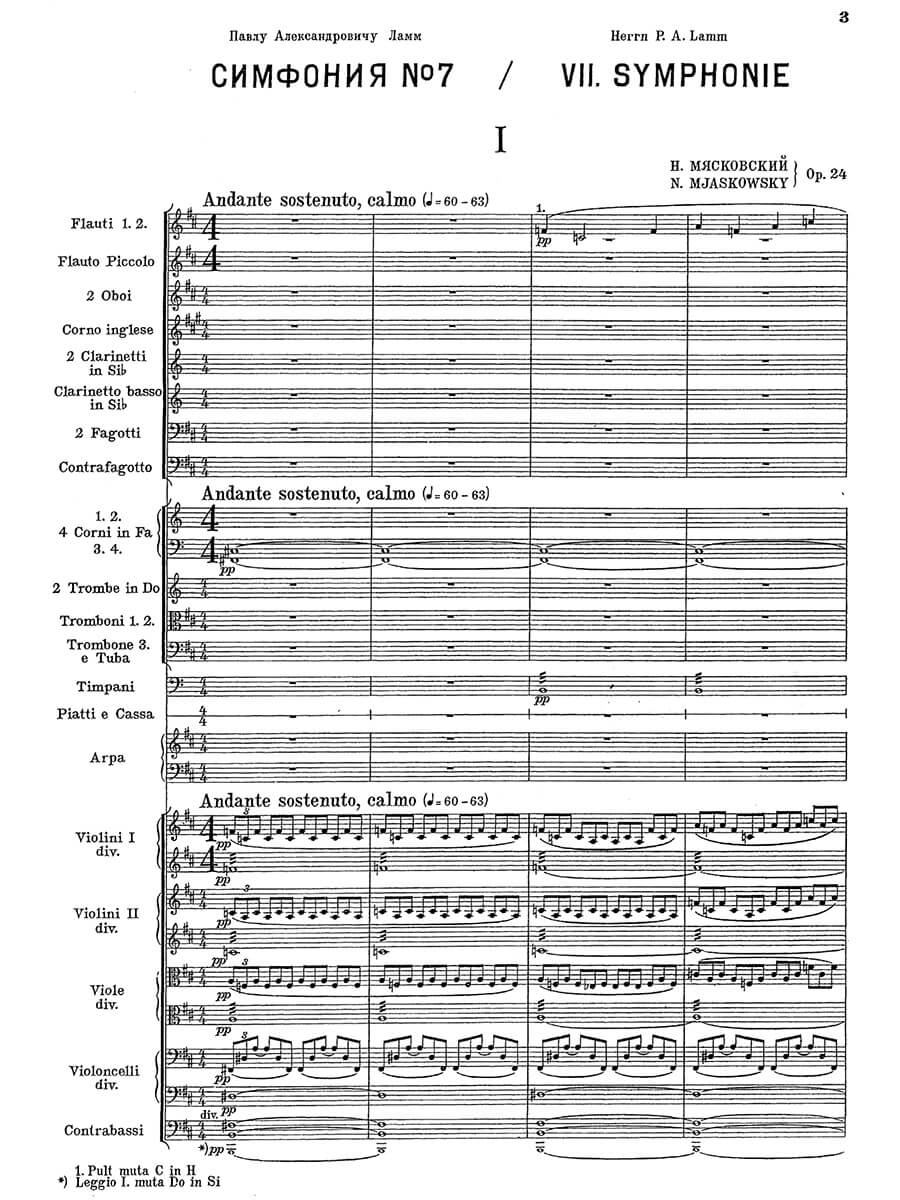Symphony No. 7 in D Op. 24
Miaskovsky, Nikolai
28,00 €
Nikolai Miaskovsky – Symphony No. 7 in D Op. 24 (1924)
(b. Fortress Modlin, Novogeorgievsk near Warsaw, 8/20 April 1881 – d. Moscow, 8 August 1950)
I Andante sostenuto, calmo (p. 3) – Allegro minaccioso, poco stravagante (p. 8) – Moderato languido (p. 18) – Con voglia (p. 19) – Allegro con fuoco (p. 29) – Allegro come prima (p. 50) – Moderato tranquillo ed affettuoso – Con voglia (p. 60) –
Poco più lento (p. 70) –
II Andante (p. 71) – Lento, calmo (p. 75) – Con vigore (p. 78) – Allegro scherzando e tenebroso (p. 82) – Molto sostenuto, calmo (p. 103) – Allegro disperato (p. 106) – Quasi Allegro I (p. 109) – Andante (p. 111) – Allegro precipitato (p. 112) –
Allegro molto (Presto, p. 122)
Preface (by Christoph Schlüren, October 2018)
Alongside with his English contemporary Havergal Brian (1876-1972) Nikolai Miaskovsky went down in history as the most prolific great symphonist of the 20th century (Brian wrote 32 symphonies, some of his later contributions were quite short; Miaskovsky wrote 27 symphonies). In the Soviet Union Miaskovsky ranked among the most renowned composers, and in the Russia of today his music is still quite popular. During his lifetime he was internationally present with his symphonies, particularly in the USA, but today performances of his music outside his homeland have become rare.
Miaskovsky’s œuvre builds a bridge from Russian symphonic tradition in succession to Tchaikovsky and Sergey Taneyev into Soviet modernism of the Shostakovich era – a bridge that is unique in its substance, intensity, and manifoldness. This position found little understanding among Western critics and opinionists after World War II and went out of fashion. Apart from its indisputably paramount craftsmanship they refused his music as an anachronism whereas in the Soviet Union he was admired and regularly performed as a true grandmaster…
Read full preface > HERE
| Score No. | 4085 |
|---|---|
| Genre | Orchestra |
| Size | |
| Printing | Reprint |
| Pages | 134 |
